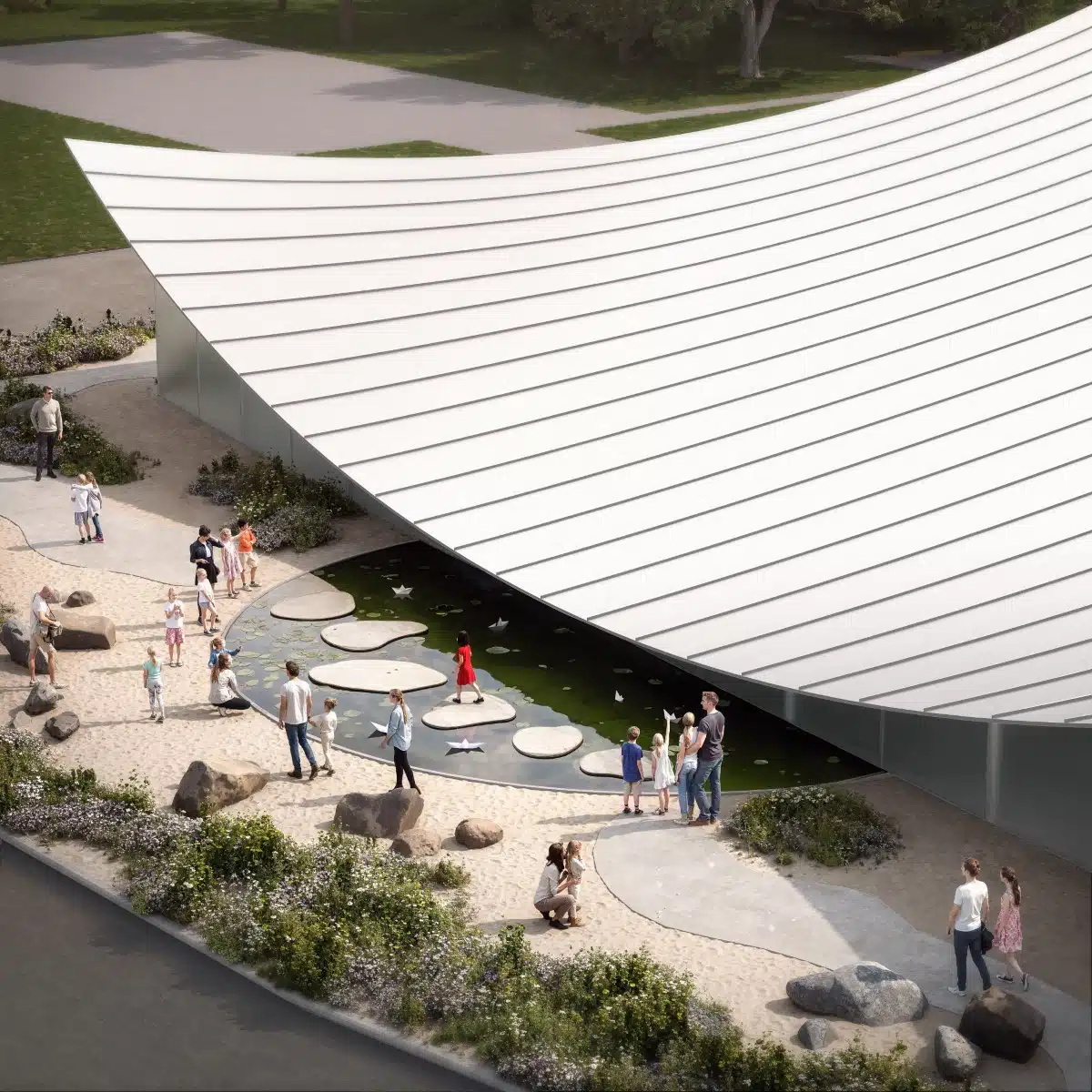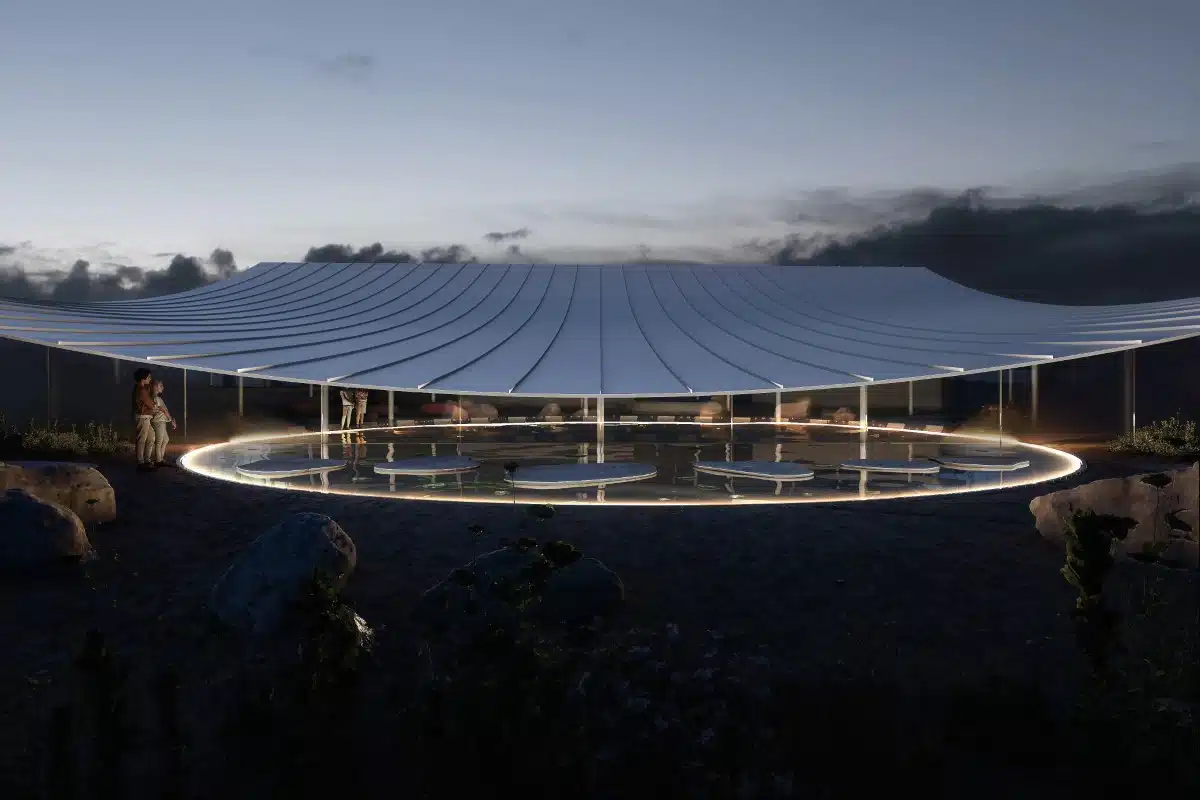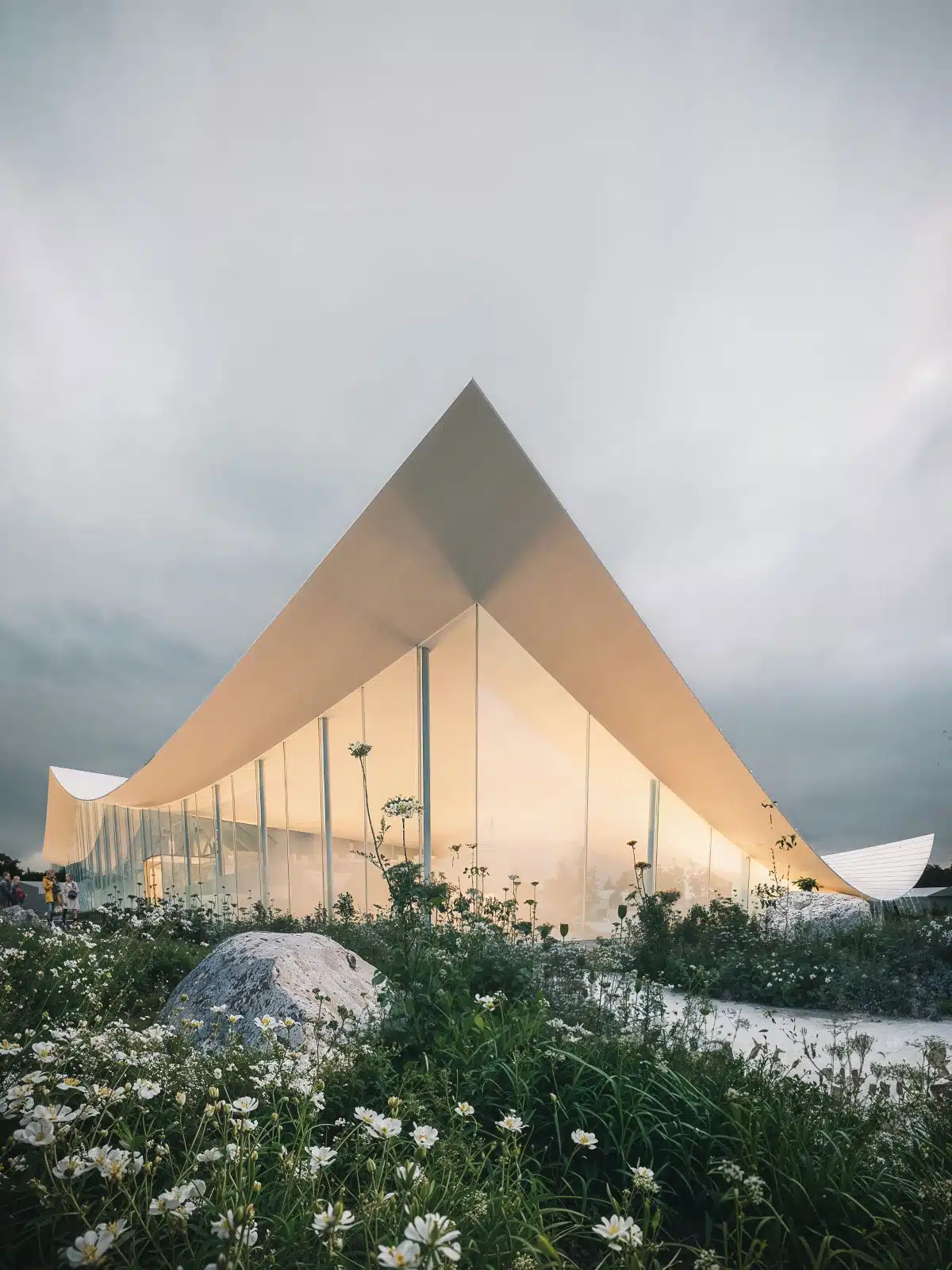
Photo: Wizarch
A former supermarket being transformed into a museum is getting a makeover by BIG (Bjarke Ingels Group). The Museum of Paper is located in Denmark, as paper art is a deeply rooted part of the country’s cultural heritage. BIG’s design calls for a lightweight roof structure that looks like a single folded sheet of paper in a stunning combination of functionality and aesthetics.
Founded by psaligrapher Bit Vejle in 2018, the Museum of Paper is the only specialized museum for paper fine crafts and design in the Nordics. Once the transformation of the former supermarket is complete, the museum will have nearly 25,000 square feet of space for workshops, events, educational programming, storage, and offices.
The roof will sit on the existing building while also creating space for the new functions around it, thereby uniting old and new. The building’s existing walls will also receive a new acoustic-regulating layer of origami-inspired paper art on the exterior.
“In collaboration with Bit, we have designed a simple concept that allows a single sheet of paper to drape over the site and the existing building. In this way, the old and new are connected under one roof,” shares David Zahle, Partner, BIG. “In the foyer and assembly space, the old structure is clearly within the new one—a unified space inspired by paper and crafted in wood.”
Clean lines and a white interior reinforce the museum’s theme, with surfaces covered in a timber construction made from that same wood used to make paper. The design also calls for new exterior spaces to help invite the public to experience the museum.
With this dramatic design, BIG is using architecture to further the mission of the museum and make a clear statement of its purpose.
“Paper art is about creating three-dimensional shapes and complex images from a monochromatic two-dimensional material—a sheet of paper,” declares Bjarke Ingels, founder and creative director, BIG. “By treating the roof surfaces as such—a single sheet of folded paper—existing and new functions are brought together in one unifying gesture. The expressive is accentuated by the clear, complexity that arises from simplicity. And an obsolete supermarket finds new life under the floating curved roof.”
BIG is transforming an old supermarket into a new space for Denmark’s Museum of Paper.
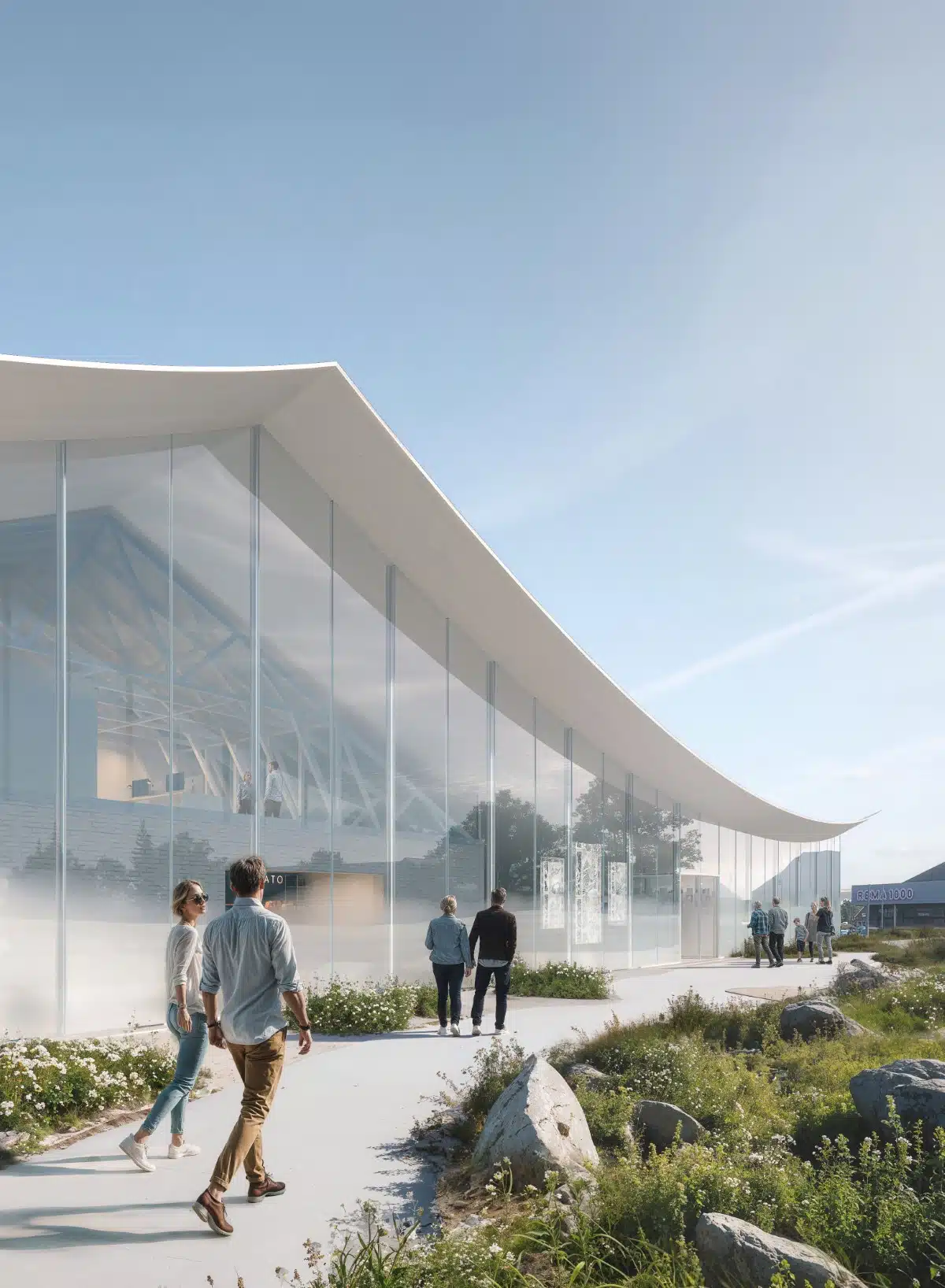
Photo: Wizarch
The light, airy roof looks like a sheet of folded paper.
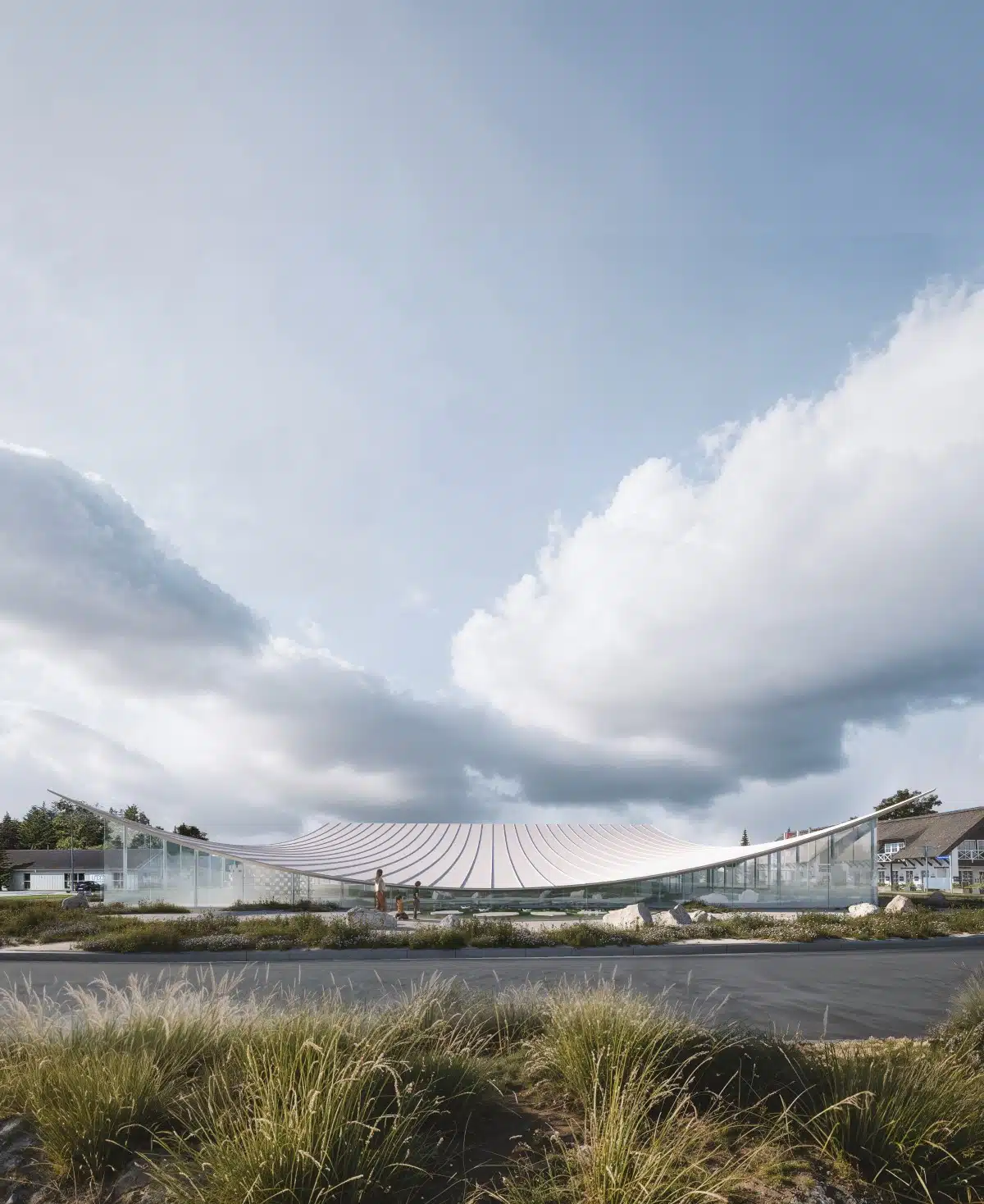
Photo: Wizarch
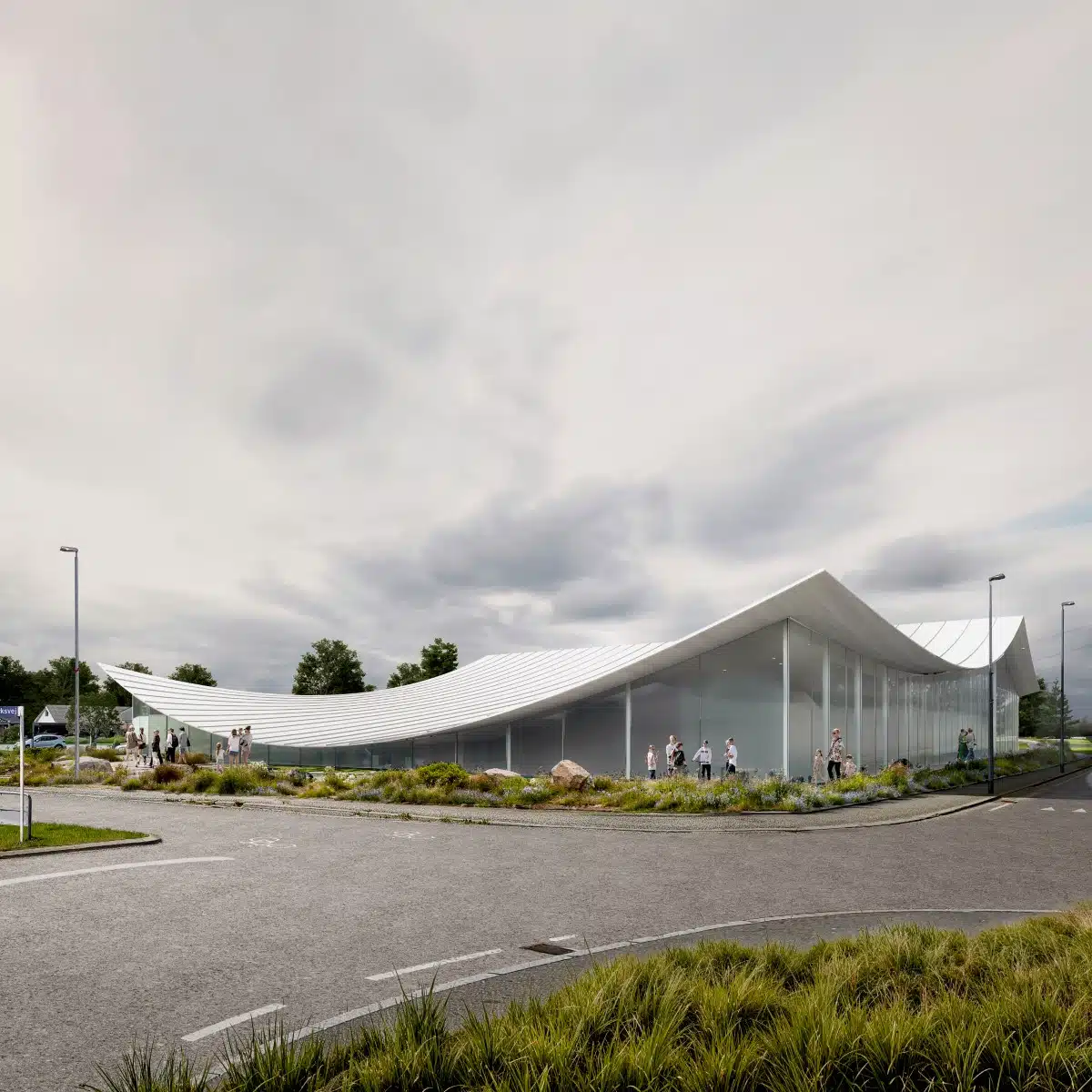
Clean lines and a white interior reinforce the museum’s theme, with surfaces covered in a timber construction made from that same wood used to make paper.
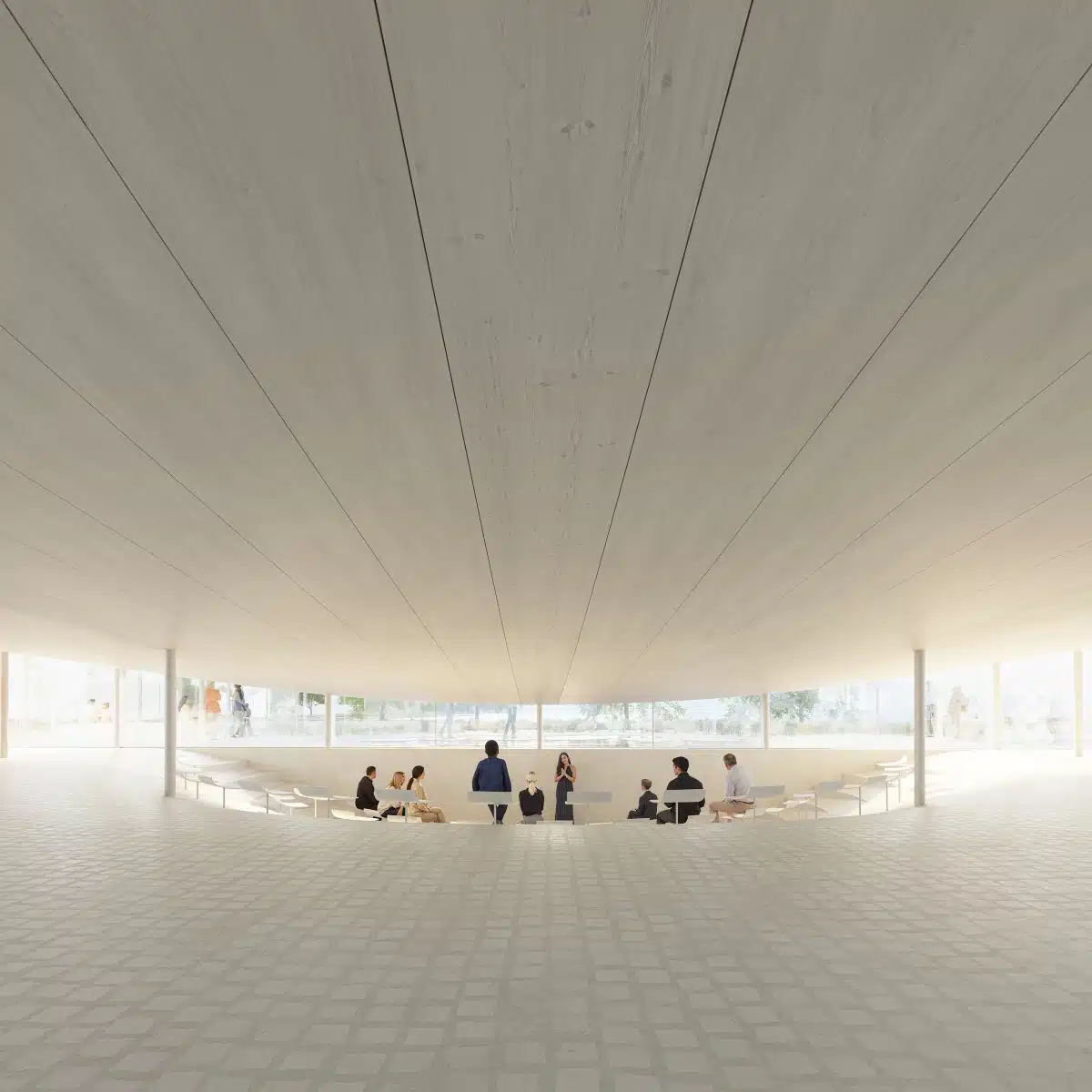
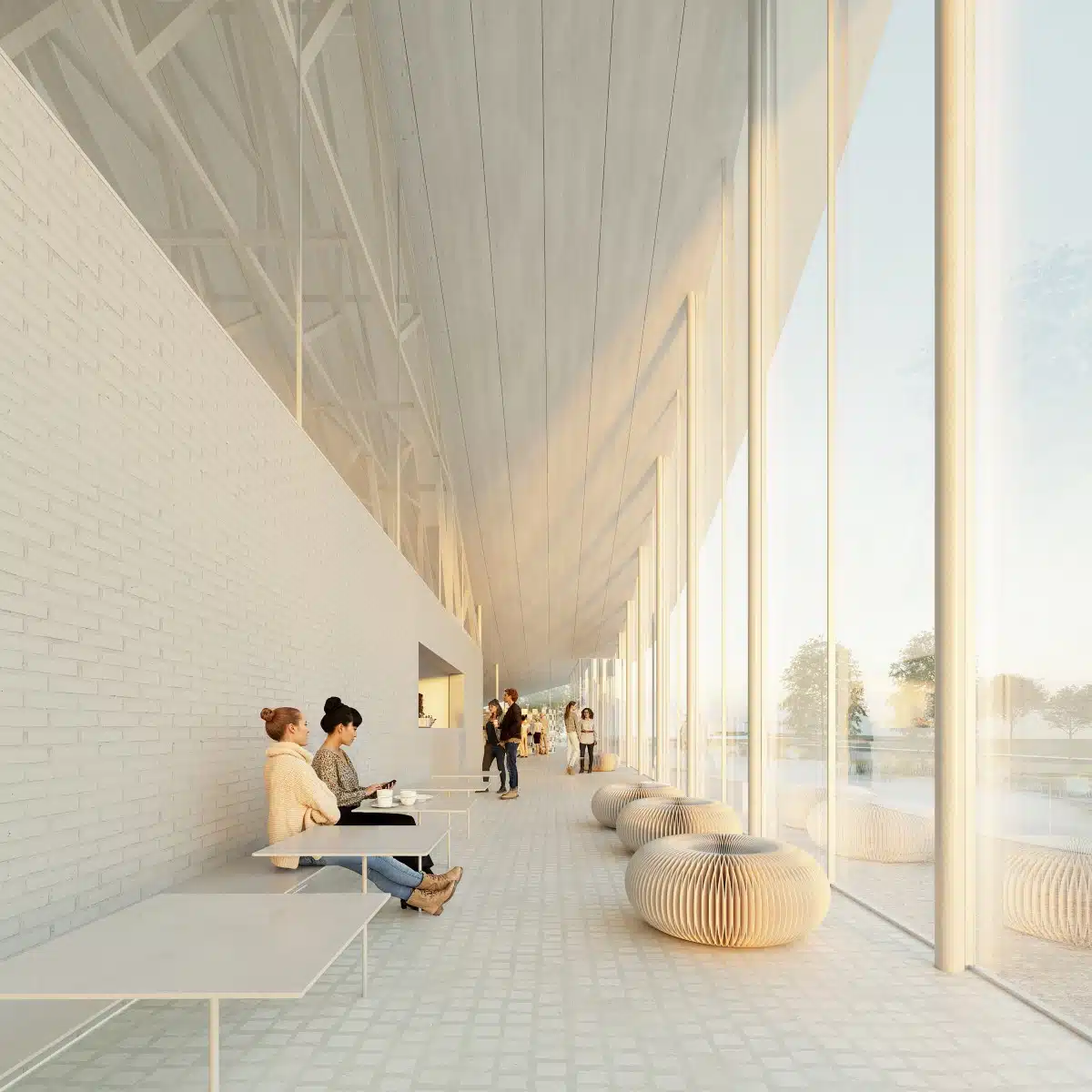
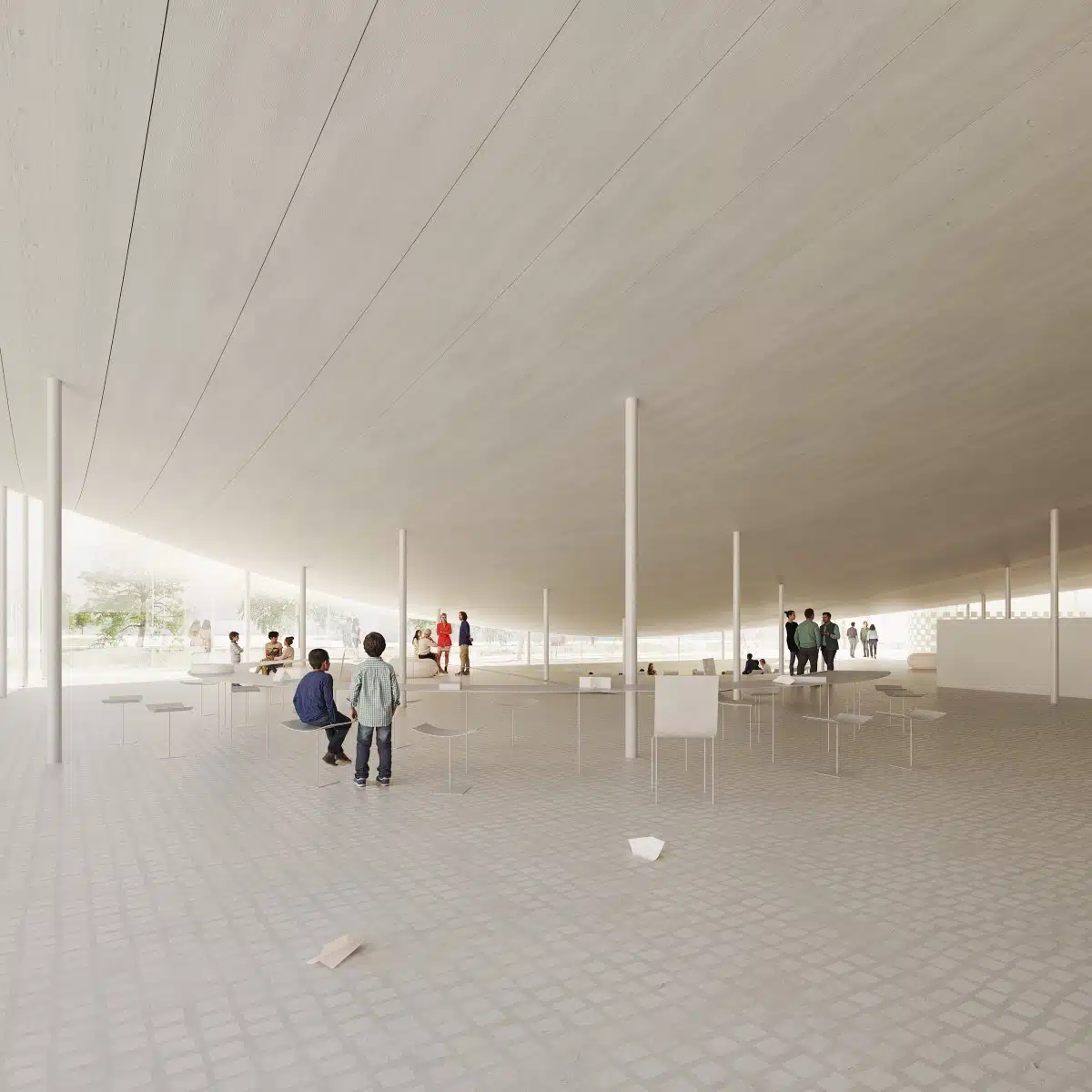
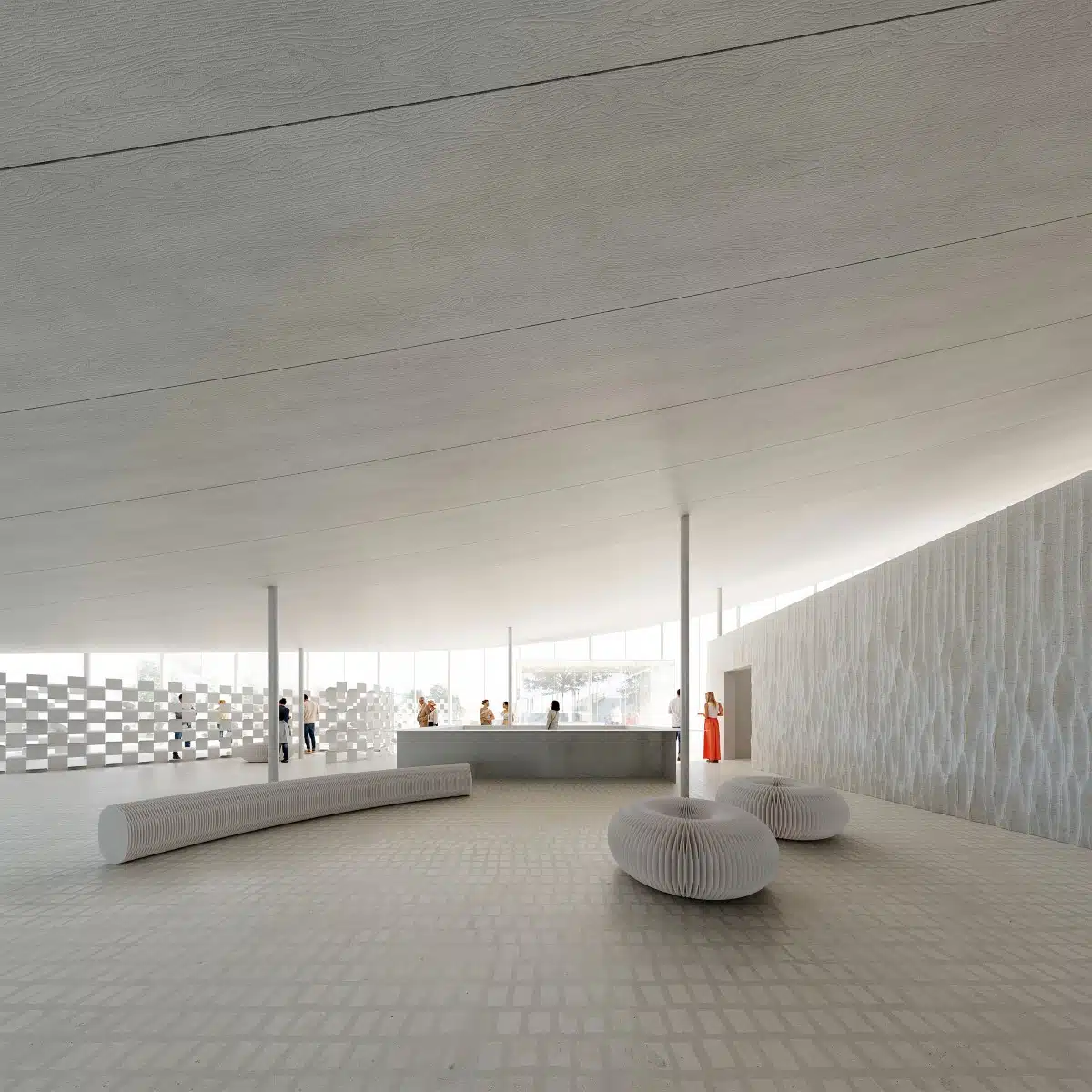
The design also calls for new exterior spaces to help invite the public to experience the museum.
